Jaspar Pahl
CorrLoss: Integrating Co-Occurrence Domain Knowledge for Affect Recognition
Oct 31, 2022Abstract:Neural networks are widely adopted, yet the integration of domain knowledge is still underutilized. We propose to integrate domain knowledge about co-occurring facial movements as a constraint in the loss function to enhance the training of neural networks for affect recognition. As the co-ccurrence patterns tend to be similar across datasets, applying our method can lead to a higher generalizability of models and a lower risk of overfitting. We demonstrate this by showing performance increases in cross-dataset testing for various datasets. We also show the applicability of our method for calibrating neural networks to different facial expressions.
Multi-label Learning with Missing Values using Combined Facial Action Unit Datasets
Aug 17, 2020

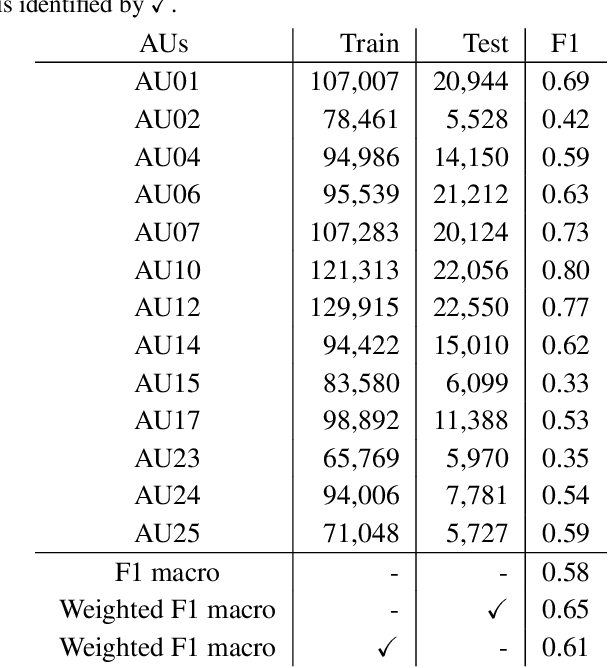
Abstract:Facial action units allow an objective, standardized description of facial micro movements which can be used to describe emotions in human faces. Annotating data for action units is an expensive and time-consuming task, which leads to a scarce data situation. By combining multiple datasets from different studies, the amount of training data for a machine learning algorithm can be increased in order to create robust models for automated, multi-label action unit detection. However, every study annotates different action units, leading to a tremendous amount of missing labels in a combined database. In this work, we examine this challenge and present our approach to create a combined database and an algorithm capable of learning under the presence of missing labels without inferring their values. Our approach shows competitive performance compared to recent competitions in action unit detection.
Unique Class Group Based Multi-Label Balancing Optimizer for Action Unit Detection
Mar 05, 2020
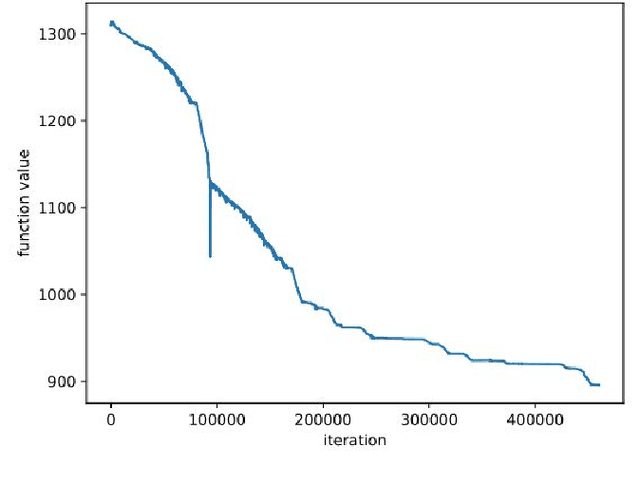
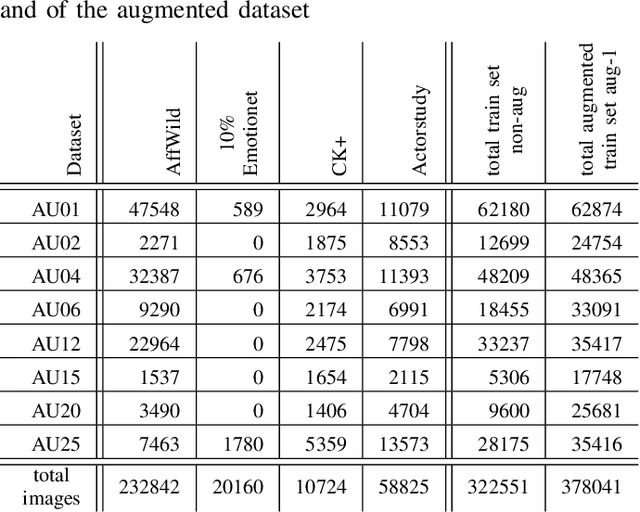
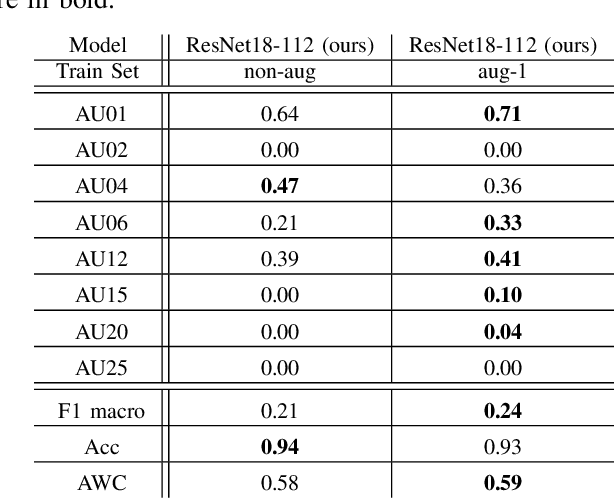
Abstract:Balancing methods for single-label data cannot be applied to multi-label problems as they would also resample the samples with high occurrences. We propose to reformulate this problem as an optimization problem in order to balance multi-label data. We apply this balancing algorithm to training datasets for detecting isolated facial movements, so-called Action Units. Several Action Units can describe combined emotions or physical states such as pain. As datasets in this area are limited and mostly imbalanced, we show how optimized balancing and then augmentation can improve Action Unit detection. At the IEEE Conference on Face and Gesture Recognition 2020, we ranked third in the Affective Behavior Analysis in-the-wild (ABAW) challenge for the Action Unit detection task.
Multi-Label Class Balancing Algorithm for Action Unit Detection
Feb 08, 2020
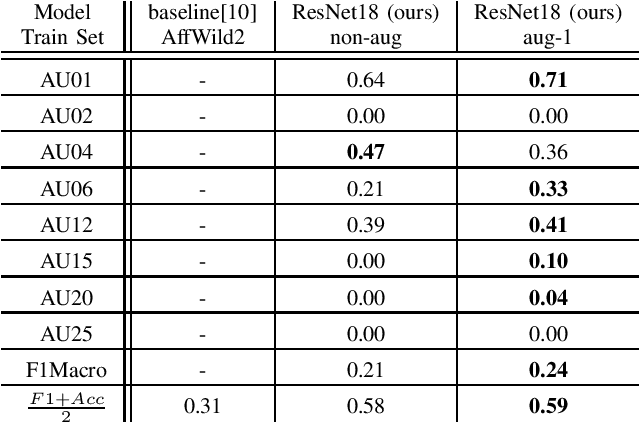
Abstract:Isolated facial movements, so-called Action Units, can describe combined emotions or physical states such as pain. As datasets are limited and mostly imbalanced, we present an approach incorporating a multi-label class balancing algorithm. This submission is subject to the Action Unit detection task of the Affective Behavior Analysis in-the-wild (ABAW) challenge at the IEEE Conference on Face and Gesture Recognition 2020.
 Add to Chrome
Add to Chrome Add to Firefox
Add to Firefox Add to Edge
Add to Edge